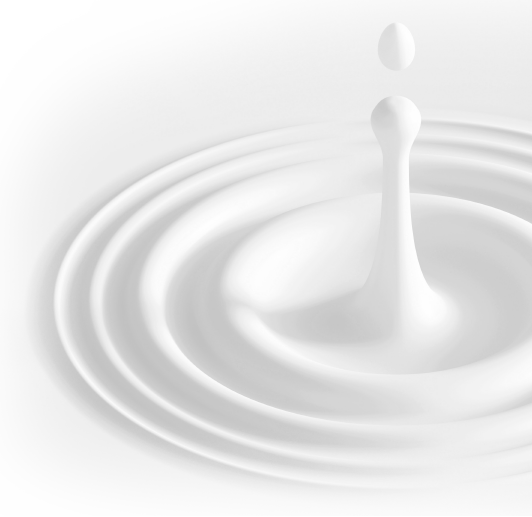In water, hydrophobic molecules are surrounded by a two different water populations: the inner shell forms a two-dimensional network of water molecules. The next layer is formed by a second water population that is almost bulk like but forms slightly stronger hydrogen bonds to the bulk water. The assumption to date was that tetrahedral, “ice-like” water dominate in the innermost hydration shell of hydrophobic molecules. The opposite is the case. These new findings were published by the team headed by Professor Martina Havenith, Chair of Physical Chemistry II and Speaker of RESOLV in The Journal of Physical Chemistry Letters on 18 June 2020.
Insights by THz spectroscopy and simulations
In their study, the researchers investigated the hydrogen bond network around the hydrophobic solvated alcohol tert-butanol, as researchers use alcohols as a prototype models for hydrophobic molecules. The team combined results from terahertz (THz) spectroscopy and simulations.
In THz spectroscopy, researchers measure the absorption of THz radiation in a sample. The absorption spectrum provides a fingerprint of the water network.
A thin layer
In their study they obtained a detailed picture of the water layers surrounding the molecule. “We refer to the innermost layer as ‘HB-wrap’, where HB stands for water hydrogen bond,” explains Martina Havenith. The top layer is called ‘HB-hydration2bulk’ as it described the interface to the bulk water. Combined, both layers of the coating are sometimes no thicker than a single layer of water molecules. “Occasionally, a single water molecule may be part of both layers,” says Havenith.
Inner layer is longer stable
When the temperature is increased, the outer layer melts first, the HP-wrap layer remains longer intact. “The inner layer has also less freedom to form distinct configurations due to the hydrophobicity of the solute,” elaborates the researcher. “As individual water molecules must always turn away from the alcohol, they form a two-dimensional, loose network.” Water molecules in the outer layer have more freedom to move and therefore also more possibilities to connect with other water molecules; researchers refer to this phenomenon as greater entropy.
Additional information
Original Publication: Valeria Conti Nibali, Simone Pezzotti, Federico Sebastiani, Daria Ruth Galimberti, Gerhard Schwaab, Matthias Heyden, Marie-Pierre Gaigeot, Martina Havenith: Wrapping up hydrophobic hydration: locality matters, in Physical Chemistry Letters, 2020, DOI: 10.1021/acs.jpclett.0c00846
--------------------------------------
Der doppelte Mantel um Moleküle in Wasser
JPC Lett.: Die Einbettung von Molekülen in Wasser sieht im Detail ganz anders aus als bisher angenommen.
Wasserabweisende Moleküle sind im Wasser von einer Ummantelung aus zwei verschiedenen Schichten umgeben: Die innere Lage bildet ein zweidimensionales Netzwerk. Darüber liegt eine Übergangsschicht, die eine stärkere Bindung zum umgebenden Wasser hat. Bisher hatte man angenommen, dass in der innersten Schicht um solche wasserabweisenden Moleküle tetraedrische, eisähnliche Formationen von Wassermolekülen überwiegen. Das Gegenteil ist der Fall. Die neuen Erkenntnisse hat das Team von Prof. Dr. Martina Havenith, Leiterin des Bochumer Lehrstuhls für Physikalische Chemie II und Sprecherin von RESOLV in der Zeitschrift The Journal of Physical Chemistry Letters am 18. Juni 2020 veröffentlicht.
Einblicke mit Thz-Spektroskopie und Simulationen
In der Arbeit untersuchten die Forscherinnen und Forscher das Wasserstoffbrückennetzwerk rund um den hydrophoben gelösten Alkohol tert-Butanol. Alkohole dienen der Forschung als einfaches Modell für wasserabweisende Moleküle. Das Team kombinierte Ergebnisse der Terahertz (THz)-Spektroskopie und von Simulationen.
Bei der THz-Spektroskopie schicken Forscher Strahlung im THz-Bereich in die Probe, welche einen Teil der Strahlung absorbiert. Das Absorptionsmuster, das die Chemiker in Form eines Spektrums darstellen, ist wie ein Fingerabdruck des Wassernetzwerks.
Innere Schicht bleibt länger stabil
So entstand ein detailliertes Bild der das Molekül umgebenden Wasserschichten. Bei Temperaturerhöhung schmilzt zuerst die äußere Schicht, die innere hält sich länger um das Molekül. „Das liegt daran, dass die innere Schicht durch die wasserabweisenden Eigenschaften des umschlossenen Moleküls weniger Bewegungsfreiheit hat“, erklärt die Forscherin. „Die einzelnen Wassermoleküle müssen sich stets davon abwenden, daher bilden sie nur ein zweidimensionales, loses Netz.“ Die Moleküle darüber haben mehr Freiheiten und daher auch mehr Verbindungsmöglichkeiten untereinander, die Forscher sprechen von größerer Entropie.
Diese Art der Wechselwirkung ist unter anderem bedeutend für Faltungsprozesse von Proteinen und die biomolekulare Erkennung zwischen einem Medikament und seinem Zielmolekül. Ein Verständnis der Rolle des Wassers spielt dabei eine zentrale Rolle.
zusätzliche information
Ausführliche Presseinformation
Originalveröffentlichung: Valeria Conti Nibali, Simone Pezzotti, Federico Sebastiani, Daria Ruth Galimberti, Gerhard Schwaab, Matthias Heyden, Marie-Pierre Gaigeot, Martina Havenith: Wrapping up hydrophobic hydration: locality matters, in Physical Chemistry Letters, 2020, DOI: 10.1021/acs.jpclett.0c00846


